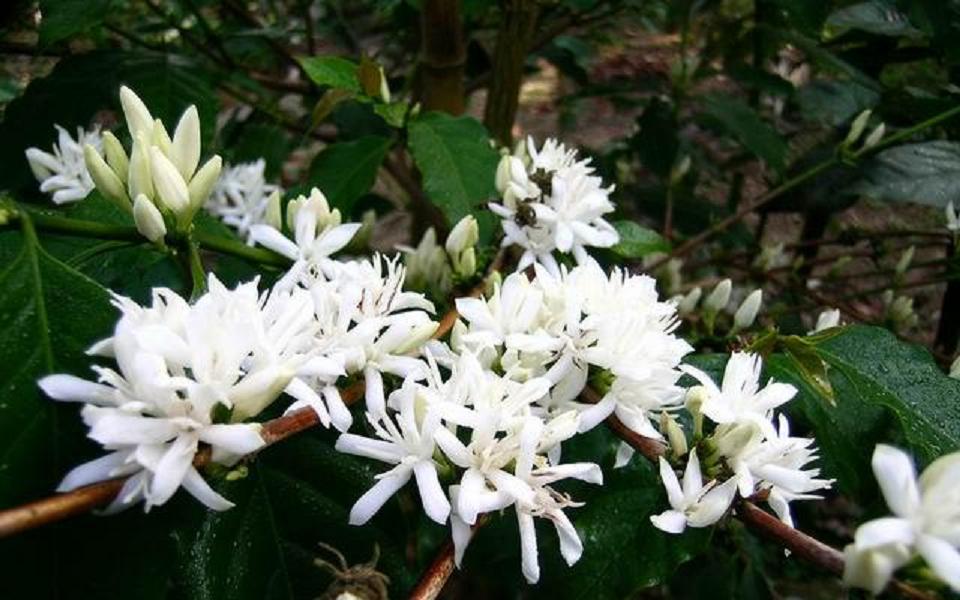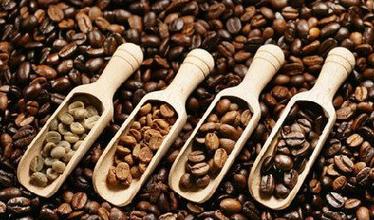Boutique coffee beans: coffee genealogy (variety knowledge popularization post) basic knowledge of coffee introduction
From Ethiopia all the way to East Africa, coffee varieties have evolved over a period of about 1300 years.
Experienced Yemen, India, Java, the Netherlands, Paris, Bourbon Island, Martinique Island, Haiti, Mexico, Brazil and other Central and South American countries.
Coffee is an evergreen shrub plant belonging to the genus Coffea in the family Rubiaceae of Gentiales.
The broad variety classification is:
Arabica
Iron pickup (typica) (bean type larger)
Mokka
tico
Kent (Indian variety should be a hybrid of Tibica and other varieties)
San Ramon
Blue Mountain
amarello (Latin for yellow, yellow fruit when ripe, trees with low yields)
Bourbon (bourbon) (smaller beans)
Mondo Nuevo (a natural cross between Bourbon and Sumatra)
Cauttra (Bourbon hybrid)
Catuai (a cross between Montenevo and Cattila)
Villalobos (Bourbon hybrid)
Geisha (Bourbon hybrid)
Villa Sarchi (Bourbon hybrid)
Garnica (Brazilian hybrid)
Mibirizi (Brazilian hybrid)
Robusta (originally a mutant of caffea canephora, Robusta is highly adaptable because of caffeine, so Robusta originally means "tough and robust.")
Conilon (Brazilian variety)
Java Ineac
Nana
Kouilou
Kangjun Xishi (congensis)
Maragogype (a mutant of typica found in Brazil's Bahia region of Maragogype, which produces the world's largest coffee bean, sometimes called an "elephant bean"(not to be confused with the common deformed bean "elephant ear")). Currently cultivated in Cuba, Colombia Colombia, Guatemala Guatemala, Mexico, Mexico, Nicaragua Nicaragua. Due to its mild smell and attractive appearance, coffee beans are sought after by many people, and production costs are high due to low yields, so demand often exceeds supply.)
Liberica (discovered in Libya in 1843, planted in: lowland or flat land below 200m, resistant to high temperature and low temperature, resistant to much rain and little rain, tree height of 10m leaf shape with 8 sharp rhombic petals at the top, fruit twice as large as Arabia pericarp, endocarp, seed coat, etc. are very thick, especially seeds tightly adhere to seeds, the operation of removing seed coat takes more time, and it is not easy to peel off after maturity. Aroma: poor aroma, bitter, strong disease resistance, adaptability are often used to do Arabica stock. Lowest planting density Major producing areas (Libya, Suriname, Guyana, India, Indonesia, Angola, Cote d'Ivoire, Philippines)
Other cultivated varieties
Arabusta (insert)
Hibrido be timor
Ruiru Eleven Kenyan dwarf species
Timo Arabica-Robstar hybrid
catimor (born in Portugal in 1995 as a cross between catimor and timo (mottled resistant))
icatu
Colombia (Variedad Colombia)
The following are some of Arabica's most important beans.
Mocha(Grown in Yemen, naturally dried to remove pulp, named after the port of Mocha on the Red Sea!)
Harrar(or "Ethiopian Mocha," processed directly in Ethiopia's port areas, removing pulp by natural drying!)
Blue Mountain(planted in the Blue Mountains of Jamaica)
Kona(cultivated in Kona, Hawaii)
Sumatra(a natural mutant of Typica, grown in Sumatra, with pudgy trees with large leaves and large fruits)
Maragogype(long fruiting period, large leaves and fruits) It is a new bean variety mutated from Typica.)
Mokka
A natural mutation, the trees are short, the fruit is small round beans, cultivated in Java.
Caturra(naturally mutated, originating in Brazil.)
Mundo Novo(a natural cross between Sumatra and Bourbon, originating in Brazil)
Catuai(artificially bred from Mundo Novo and Caturra)
San Ramon(dwarf mutant, originating in Central America.)
Ruiru eleven(short species selected by Kenya, resistant to berry diseases of plants, but losing Kenya's sour character!)
Kent(coffee tree cultivated in India and resistant to leaf rust)
Source: Calf Coffee Blog
Important Notice :
前街咖啡 FrontStreet Coffee has moved to new addredd:
FrontStreet Coffee Address: 315,Donghua East Road,GuangZhou
Tel:020 38364473
- Prev

Basic knowledge of coffee introduction: coffee flower coffee blossoms
Coffee flowers can be enjoyed at the beginning of the second or third year of coffee planting. if there are no special circumstances, they will blossom and bear fruit naturally, so it is easy to think that the harvest of coffee trees will be 2-3 years later. Coffee flowers are white, born in the axils of the leaves, where the leaves come into contact with the branches, usually appear in clusters, each flower will have 5-6 petals, slender micro-roll, look at the picture is very
- Next

Espresso beans: what are coffee beans? What kind of matching is good?
What is matching? Since it is a blending, it naturally refers to the blending of more than two kinds of raw beans, but it can also match the same kind of coffee beans with different roasting degrees, or even new crop and aged coffee or old crop of the same kind of coffee beans, so the type referred to in the blending is no longer a coffee variety in a narrow sense, but extended to coffee in a broad sense.
Related
- Guji coffee producing area of Guji, Ethiopia: Humbela, Shakiso, Wulaga
- What is the most expensive variety of Qiloso in BOP multi-variety group?
- How to store the coffee beans bought home?
- Why are Yemeni coffee beans so rare now?
- Ethiopian Sidamo all Red Fruit Sun Sun Santa Vini Coffee beans
- SOE is mostly sour? What does it mean? Is it a single bean? what's the difference between it and Italian blending?
- Is Italian coffee beans suitable for making hand-brewed coffee?
- How to choose coffee beans when making cold coffee? What kind of coffee beans are suitable for making cold coffee?
- Just entered the pit to make coffee, what kind of coffee beans should be chosen?
- Can only Japan buy real Blue Mountain Coffee? What are authentic Jamaican Blue Mountain coffee beans?

